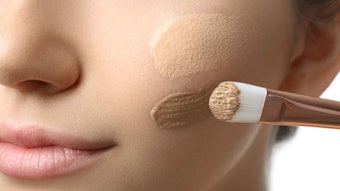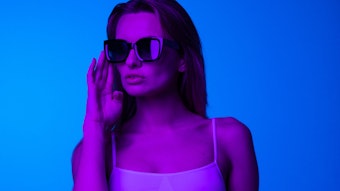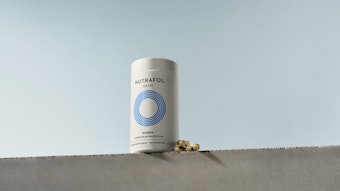It is summer 2008, and the Wiechers family is going on holiday by car to Spain. We left Gouda, Netherlands, early in the morning, and spent the night in Limoges, France. In the morning of our second day, we soon see signs to Sarlat, a beautiful little French town in the Dordogne where we spent our holiday a couple of years back. One evening in Sarlat in 2004, we strolled through the medieval town after a good meal with fois gras and a beautiful local wine. My wife is a vegetarian and does not drink any alcohol so I had double portions of both and we are indeed a perfect match. We ran into a group called Paris-Londres that played in the streets of Sarlat by candle light. One particular song struck us as beautiful and we listened for more than an hour, which in the busy holiday schedules of the Wiechers family is actually quite a long time. But that must be why they call it holiday.
No, I am not paid by the French tourist board in an attempt to attract more cosmetic scientists to the Dordogne. On our way to Spain, we picked up the latest CD of Paris-Londres, “Dans un pré." As every other time, the whole family and I waited for the fourth song, La Santé (health), that we listened to three times that evening in Sarlat. In this song, Bruno declares his love for sausages, beer and strong coffees. Worse, he also loves cigarettes, Bourgogne wines and French fries much more than apples or a liter of milk. Health, as he concludes, is actually not very complicated at all and all that is good is bad. I admit that it sounds rather banal, but in French, it sounds enchanting, "La santé, c’est pas compliqué, tout ce qui est bon est mauvais."
But what does this have to do with cosmetic science? I have written how my colleague and I could measure testosterone and estrogen in skin and link it to skin moisturization. Using the same technique, we were able to show that the skin of people that smoke is on average about 15 years older than that of their non-smoking counterparts, leading me to the previous quote "Tout ce qui est bon est mauvais," or all that is good is bad.
People love to do all that God has forbidden. At least that is what they like to do in the Netherlands, but considering the number of tourists coming to Amsterdam every year, they like it just as much anywhere else. We all love meat, fat, sugar, alcohol, sun, sex and the beach. Meat has cholesterol and fat which is not good for you. Most fat is saturated and certainly not the good conjugated linoleic acid that we put in our cosmetic products. Sugar can act as a skin moisturizer, but typically adds more carbohydrates than water. Sun is so bad that we need to protect ourselves from its UV radiation with large SPFs. Sex was discussed in my last column when I said that our industry is all about sex. And all these wonderful but horrible things take place on the beach, so our preferences are not only a Sodom and Gomorrah for our health as Paris-Londres says, but also for our beauty. After all, beauty is the ultimate outcome of good health, also in evolutionary biology. While we are passing the exit to Sarlat on our way to Spain, this is all running through my brain and I am asking myself how bad Bruno’s preferences really are for my health and my beauty. Have people been making this up or is there really some benefit to be obtained from all that God has forbidden. I, therefore, decided to have a look in recent scientific literature about what is said about the cosmetic effects of all that God forbids.
The first article I found was titled “Sun protection by red wine?” Being an individual that needs every argument to convince his non-drinking wife that he needs his daily portion of the magic red elixir, I read with interest that 15 healthy male physicians (probably equally weak individuals married to equally strong non-drinking wives) participated in an investigation in which wine was applied to their back under occlusion as well as 12% alcohol. The systemic effect was tested by ultraviolet irradiation immediately prior to oral intake. The result was that there are no topical effects and wine baths will not have any sun protective properties. A significant rise of the MED following oral intake of the wine with the highest level of polyphenols content, however, might be due to these substances. The authors conclude that further research is needed to clarify the role of polyphenol content, dose and duration of wine consumption. Needless to say, Bruno Vatys and myself have already contacted the authors to participate in the next trial. We are even willing to sign two informed consent forms to get double portions.
The second article I found this week on the topic of what God forbids was “The effect of topical caffeine on the morphology of swine hypodermis as measured by ultrasound.” This is a rather bizarre study in which 35-day-old pigs received to their dorsal skin gel; gel and ultrasound; gel and 5% w/w caffeine; and gel, caffeine and ultrasound daily for 15 days. A fifth area receiving no topical application served as control. The authors found that ultrasound treatment was only effective in increasing the cutaneous permeation of caffeine, as evidenced by the reduction in thickness of the hypodermis and number of adipocytes. This study is bizarre, because the researchers use ultrasound to enhance the topical penetration of caffeine which is often used as a model penetrant in skin delivery studies. These pigs must have very tough skin to need ultrasound to help caffeine penetrate. Also, how can 35-day-old pig skins mimic the skin of menopausal ladies suffering from cellulite. After all, they call it orange skin but maybe it is really behaving like pig skin! But as I am not suffering from cellulite, I continue to take my coffee black, just like my good friend Bruno Vatys takes his double espresso.
The third and last article I found had the intriguing title “Passive cigarette smoke exposure inhibits ultraviolet B-induced skin tumors in SKH-1 hairless mice by blocking the nuclear factor kappa B signalling pathway.” In this study, the investigators subjected groups of mice to one of the following treatments: control, smoke (the equivalent of 40 cigarettes a day for 20 weeks), UV (0.1 J/cm2 of UVB five times a week for 20 weeks) or smoke and UV. Oxidative DNA damage was investigated and it was shown that while UVB exposure resulted in an average of four squamous cell carcinomas (SCC) and 15 smaller papillomas per mouse, exposing the mice to both UVB and passive cigarette smoke completely prevented SCC formation and averaged less than one small papilloma per mouse. Well Bruno, there you have it my friend, passive cigarette smoking prevents UVB-induced SCC in mice and dramatically reduces the incidence of non-malignant papillomas by altering the NF-κB signalling pathway of tumorogenesis.
I should stop, but I would like you to know that I did have some great holidays. I drank plenty of wine in the shade after having my morning coffee, while the neighbors in the adjacent mobile home smoked 40 cigarettes a day. Maybe Bruno Vatys needs to change his chanson and start to sing that all that is bad is good for you (and your beauty). If you see Paris-Londres in Sarlat, give Bruno Vatys my regards, a bottle of wine and a cigarette to his lovely wife Sophie Read, the English violin-playing lady. We still enjoy it four years later, so it can’t be that bad and look at my excellent skin. Bruno and Sophie, maybe not all that is good is bad….
-Prof. Johann W. Wiechers, PhD
Technical advisor, Allured Business Media
Independent consultant for cosmetic science, JW Solutions
[email protected]
www.jwsolutions.com










